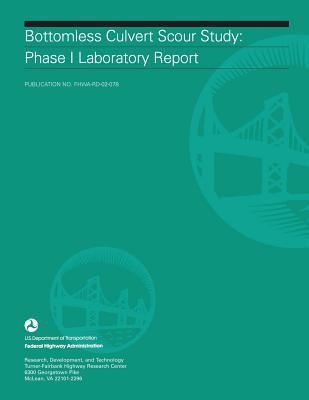
- We will send in 10–14 business days.
- Author: Federal Highway Administration
- Publisher: CreateSpace Independent Publishing Platform
- Year: 2015
- Pages: 74
- ISBN-10: 150883640X
- ISBN-13: 9781508836407
- Format: 21.6 x 28 x 0.4 cm, softcover
- Language: English
- SAVE -10% with code: EXTRA
Reviews
Description
Bottomless culverts are three-sided structures that use the natural channel for the bottom. These structures could be used to convey flows from one side of a highway to the other. As such, they are an environmentally attractive alternative to box, pipe, and pipe arch culvert designs. Bottomless culverts range in size from less than a meter (1.5 feet) to more than 10 meters (35 feet) in width. The failure of such a structure could have severe consequences similar to the failure of a bridge. On the other hand, since the cost of the foundation and scour countermeasures represents a significant portion of the cost of this type of structure, overdesign of these elements can add significantly to the cost of the project. Several dozen physical modeling configurations of bottomless culverts were tested, and the resulting scour at the entrance along the foundation and outlet was measured. Predictive equations for estimating scour depth were developed and compared to MDSHA methodology. These equations will provide guidance for the design of footing depths for bottomless culverts. The study was conducted in two phases. The first phase focused on measuring maximum scour depths at the culvert entrance and developing an analysis procedure using methods found in the literature to approximate prescour hydraulic parameters that drive the analysis. No fixed-bed experiments were conducted in the first phase to measure actual prescour hydraulic parameters. No submerged entrance experiments were conducted in the first phase. The second phase expanded the investigation to include scour measurements at the outlet, submerged entrance scour measurements, and detailed velocity and depth measurements with a prescour fixed bed at locations where maximum scour occurred. Additional tests were conducted to evaluate the use of various measures to reduce scour including wingwalls, pile dissipators, riprap, and cross vanes.
EXTRA 10 % discount with code: EXTRA
The promotion ends in 20d.10:10:09
The discount code is valid when purchasing from 10 €. Discounts do not stack.
- Author: Federal Highway Administration
- Publisher: CreateSpace Independent Publishing Platform
- Year: 2015
- Pages: 74
- ISBN-10: 150883640X
- ISBN-13: 9781508836407
- Format: 21.6 x 28 x 0.4 cm, softcover
- Language: English English
Bottomless culverts are three-sided structures that use the natural channel for the bottom. These structures could be used to convey flows from one side of a highway to the other. As such, they are an environmentally attractive alternative to box, pipe, and pipe arch culvert designs. Bottomless culverts range in size from less than a meter (1.5 feet) to more than 10 meters (35 feet) in width. The failure of such a structure could have severe consequences similar to the failure of a bridge. On the other hand, since the cost of the foundation and scour countermeasures represents a significant portion of the cost of this type of structure, overdesign of these elements can add significantly to the cost of the project. Several dozen physical modeling configurations of bottomless culverts were tested, and the resulting scour at the entrance along the foundation and outlet was measured. Predictive equations for estimating scour depth were developed and compared to MDSHA methodology. These equations will provide guidance for the design of footing depths for bottomless culverts. The study was conducted in two phases. The first phase focused on measuring maximum scour depths at the culvert entrance and developing an analysis procedure using methods found in the literature to approximate prescour hydraulic parameters that drive the analysis. No fixed-bed experiments were conducted in the first phase to measure actual prescour hydraulic parameters. No submerged entrance experiments were conducted in the first phase. The second phase expanded the investigation to include scour measurements at the outlet, submerged entrance scour measurements, and detailed velocity and depth measurements with a prescour fixed bed at locations where maximum scour occurred. Additional tests were conducted to evaluate the use of various measures to reduce scour including wingwalls, pile dissipators, riprap, and cross vanes.


Reviews